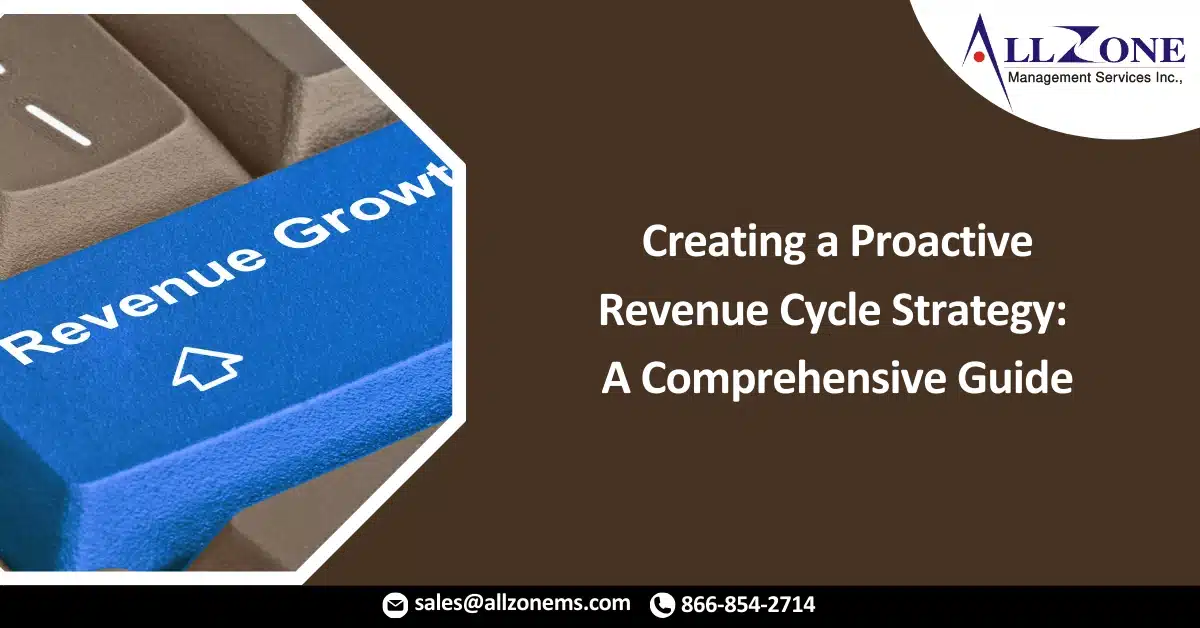The effectiveness of revenue cycle management relies on a proactive approach that integrates key performance indicators (KPIs), benchmarking, and frequent performance evaluations.
The revenue cycle plays a crucial role in the long-term financial sustainability of healthcare practices as it impacts all areas of their operations. To enhance revenue and streamline processes, healthcare practices are adopting a proactive revenue cycle strategy that involves optimizing each stage of the cycle and addressing vulnerabilities before they become problems.
By embracing a proactive revenue strategy, healthcare practices can improve their revenue cycle and maintain a cohesive approach to people, processes, and technology. However, to successfully execute a proactive revenue cycle strategy, practices must establish clear goals, understand industry benchmarks, and conduct regular performance reviews.
Define Goals and Establish KPIs
When developing a proactive revenue cycle strategy, start by defining clear goals and establishing key performance indicators (KPIs). Analyzing last year’s metrics can provide valuable insights into identifying trends and problem areas, as well as establishing a baseline for measuring progress.
When outlining practice goals focus on the most critical areas and provide clear direction to staff. It’s important to avoid setting too many goals and instead focus on simple, achievable objectives. Using action verbs in goal statements can help encourage a proactive mindset.
Monitoring KPIs is essential for maintaining a constant pulse on revenue cycle strength. KPIs provide direction, help monitor financial health, improve forecasting, measure progress, and identify issues and opportunities. They should be objective, measurable, and show a trend or comparison over time. Common KPIs tracked in a proactive revenue cycle strategy include days in accounts receivable (A/R), aging periods, unapplied credits, revenue per visit, and collections ratio.
Industry Benchmarking
After establishing KPIs, it’s time to implement best practices for proactively reviewing accounts receivable (A/R) with a strategic lens. This begins by defining the necessary data for creating KPIs and outlining the analysis required to track them. Data is a powerful tool for identifying areas of concern and trends, enabling practices to establish a baseline and measure progress. However, it’s essential to be aware of any missing data and take steps to understand why it’s missing, as well as finding ways to obtain it moving forward.
Once practices collect the necessary data, leaders should compare it to industry benchmarks and historical performance. By evaluating their performance against industry standards and incorporating best practices, practices can assess their current standing and desired level of performance. Tracking historical performance can also provide valuable insight into progress and trends over time.
To organize the data, statistics, and trends, it’s recommended to create easy-to-understand visuals. The visibility, accessibility, and readability of visual aids help leaders communicate data and share key findings within a practice. Whether using an Excel sheet or leveraging their system’s built-in reporting, it’s important to ensure both leaders and staff have access to these visuals to maintain alignment.
Creating Performance Reviews
The final step in implementing a successful proactive A/R strategy is to establish intervals for regular performance reviews. Regularly monitoring the practice’s financial performance is crucial for maintaining overall financial health. These reviews help practices track progress, identify bottlenecks, and implement corrective actions in a timely manner. Continuous monitoring enables early detection of revenue cycle issues and proactive steps to mitigate them.
Once all goals are achieved, KPIs are established, and a proactive A/R strategy is implemented, consider using a checklist with defined tasks, target dates, and responsible parties to ensure everyone is aligned and accountable. Keep this list visible so everyone in the practice can track progress and identify any productivity gaps to help adjust responsibilities and target dates to meet practice-wide goals.
Proactive revenue cycle strategies are essential for healthcare practices to enhance their financial health in today’s dynamic healthcare landscape. While excellent patient care should always remain a clinic’s overarching goal, improving financial health and understanding where the practice stands is critical. As leaders navigate the challenges of the revenue cycle, proactive strategies will be instrumental in achieving long-term financial success.

